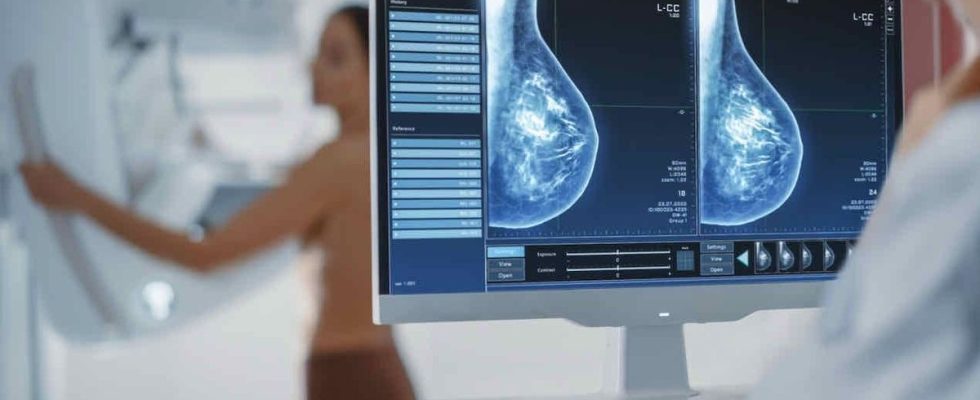Published on
Updated
Reading 2 mins.
in collaboration with
Ivan Pourmir (medical oncologist)
Medical validation:
May 04, 2023
According to an American study, changes in breast density over time may be associated with an increased risk of breast cancer. Update on this discovery with Dr Pourmir, oncologist at the George-Pompidou European Hospital in Paris.
Could changes in breast density be a risk factor for breast cancer? Yes, according to a new study published last week in the journal JAMA Oncology.
Breast density decreases over the years
It’s a fact: breast density (the estimate of the amount of dense breast tissue appearing on a mammogram, editor’s note) naturally decreases as a woman ages. But according to the work of researchers at Washington University in St. Louis, it could also be a risk factor for breast cancer.
To test this theory, the scientists looked at data from 947 women, drawn from a large cohort of 10,481 participants. All performed annual mammograms between November 3, 2008 and October 31, 2020.
This is how they noticed that candidates whose breast density decreased more slowly were more at risk of malignancy in the chest.
Specifically, the researchers found a significant decrease in breast density in all women after 10 years, whether or not they had developed breast cancer, but the rate of decrease in breast density was significantly ” slower” among breast cancers diagnosed late.
Breast cancer: towards a new diagnostic tool?
For the researchers, observing breast density over time could become an “additional tool” in breast cancer screening.
“Collecting and assessing breast density over time should be part of standard screening care“, says Dr. Graham A. Colditz, author of the study and deputy director of the Institute of Public Health at the University of Washington in the journal Healio. “Additionally, breast cancer risk assessment models should be refined to include the evolution of density change in each breast as an indicator of risk beyond a simple single density measurement.“, he added.
Interesting results, but which nevertheless have some limitations according to Dr. Pourmir.
“This discovery may be interesting if it makes it possible to anticipate the occurrence of cancer, and thus to strengthen screening in women where the density decreases slowly while it could be released in others. On the other hand, there is no discussion of a possible bias which is as follows: when the breast is too dense, we are sometimes dissatisfied with the mammography image and we may have to do an ultrasound and/or a complementary MRI, which can then lead to an over-diagnosis of breast cancer for technical reasons and not for the biological difference between dense and less dense breasts“, recalls the oncologist.
